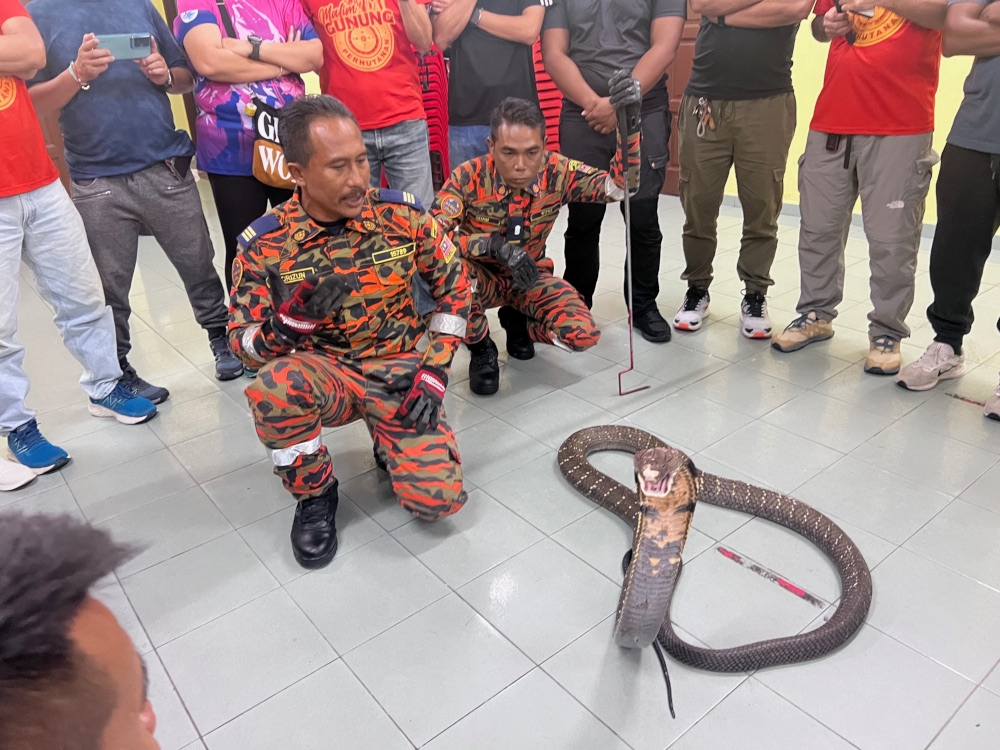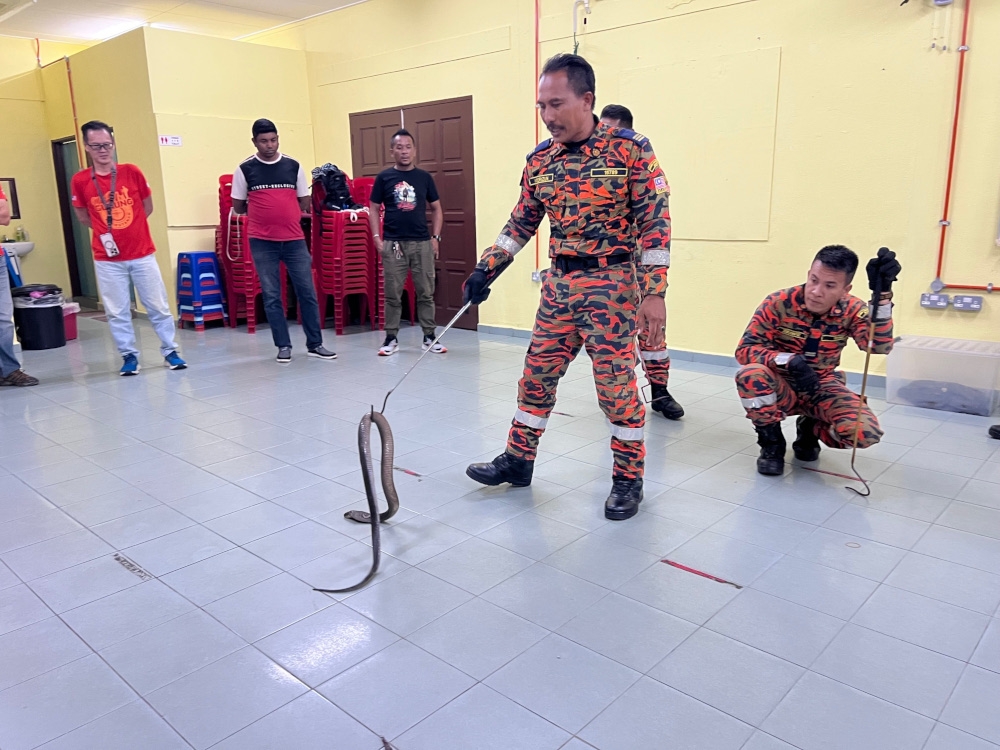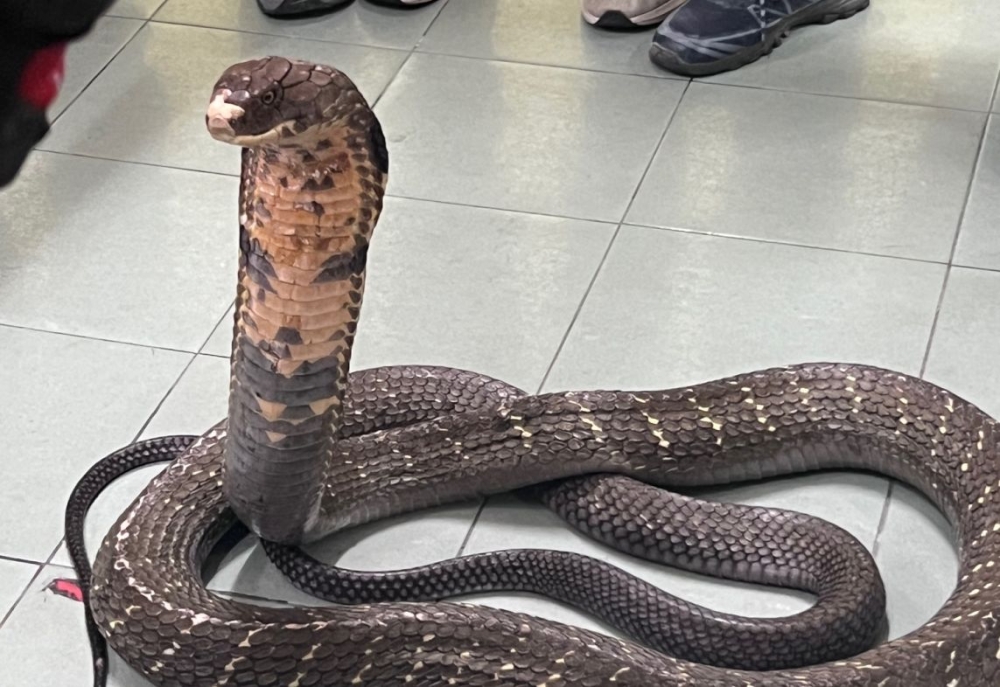GEORGE TOWN, Nov 18 — Surrounded by a circle of nervous participants with a live King Cobra in the centre, a top expert from the Fire and Rescue Department set out to prove one thing: the world’s longest venomous snake is dangerously misunderstood.
According to the department’s King Cobra Squad northern region chief Noorizun Kechik, widely known as “Raja Ular Kedah,” the snake will not attack, chase, or spring through the air unprovoked.
Through a series of live demonstrations at a recent workshop, he showed that understanding the snake’s behaviour is the key to staying safe.
Understanding the King Cobra’s defensive nature
Noorizun demonstrated that the King Cobra is primarily defensive and reacts to perceived threats, not mere presence.
When he provoked the snake to rear its head, it ignored the stationary circle of people around it, focusing only on his movements.
He also explained that a King Cobra’s strike is limited by its intimidating posture.
“The King Cobra can only strike at a distance that it can reach, so if it rears up to about two feet high, it can only reach victims near it.
“So, if you move more than two feet away from it, it will not attack, nor will it chase you,” he said.

A lesson in snake confidence with the King Cobra. — Picture by Opalyn Mok
How the snake assesses a threat
The expert showed that the snake is a careful predator, not a mindless aggressor.
“The King Cobra doesn’t strike immediately upon being provoked or feeling threatened… instead, it will observe the situation, it will look at the distance and assess the threat,” Noorizun said.
The primary trigger, he stressed, is movement.
In one tense demonstration, he had a participant slowly step back while Noorizun tapped his foot.
The snake’s head immediately swivelled to focus on the moving foot, but as soon as the person was a safe distance away and stood still, the snake lost interest.
The golden rule: Stay calm and move slowly
If you encounter a King Cobra, the most important thing is to remain calm and create distance with slow, deliberate movements, Noorizun said.
“This is snake confidence. What is most important when faced with a venomous snake is to remain calm and to move in a non-threatening way away from them,” he said.
If you accidentally step on one, he advised slowly backing away without making sudden moves.
“You must not make it worse by using a stick to prod it or hit it because this will anger it and it will surely attack,” he warned.

Noorizun demonstrates how to safely shift a monocled cobra with a stick. — Picture by Opalyn Mok
A lesson on the monocled cobra
Noorizun also demonstrated how to handle the Monocled Cobra, a smaller but equally dangerous species often found in farms and swamps.
By lifting the snake’s tail and letting it hang at arm’s length, he showed that it could not curl up to strike.
“If you have a hiking stick, or any stick, use it to support its head and slowly shift them to another location by gently placing them down and letting go,” he said, demonstrating the technique to participants.
What to do if you find a snake at home
For the common scenario of finding a snake in your house, Noorizun advised against panicking or provoking the animal.
Instead, he said the most helpful action is to keep an eye on it from a safe distance, note where it is hiding, and immediately call the Fire and Rescue Department (999).
He explained that this simple act is vital for a quick and safe removal.
“It would take only 10 minutes for us to catch it if we know where it is,” Noorizun said, “but if you run out and leave it inside on its own, by the time we arrive, it would have hidden anywhere else in the house, and this could take us hours to find.”

